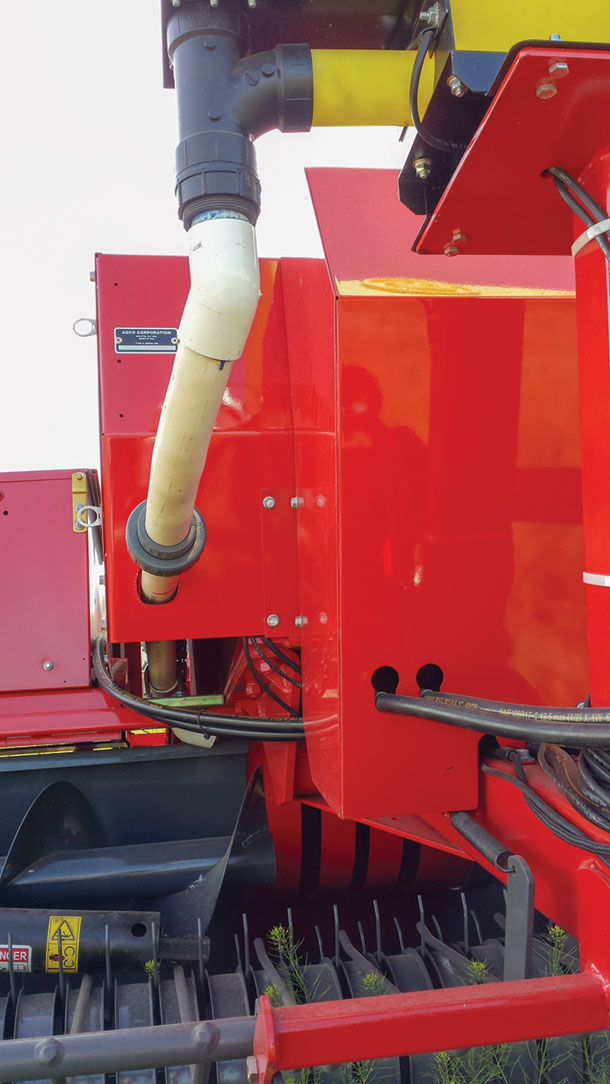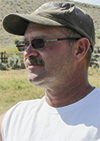One of the biggest challenges hay producers have always faced is hitting that perfect moisture window. Forage analysis supports what many producers have known for a long time – minimizing the time hay lies in the field improves relative feed value (RFV).
Whether the hay producer is trying to hit that optimal quality window or beat a rain storm, excessive and variable moisture is an age-old problem.
As if the moisture variables thrown at the hay producer by Mother Nature were not enough, many hay producers are now baling alfalfa with a slightly higher moisture content in order to improve leaf retention, resulting in higher RFV and protein content. The RFV difference between hay baled at 13 and 19 percent can mean as much as 60 points.
Dr. Dan Undersander, a retired forage agronomist with University of Wisconsin, says, “A general principle is that when we harvest alfalfa, it should be around 50 percent leaves and 50 percent stems – plus or minus 5 percent. Look at your bales, and see if they are about 50-50, leaves to stems. If not, look to see if you left leaves in the field.”
Leaf retention is impacted by a multitude of man-made variables, such as the level of crop maturity at harvest, the type of equipment we use to harvest the crop and the number of times we manipulate the crop before it is packaged.
Undersander says, “What you can do to minimize leaf loss is basically baling it wetter. Baling a little bit wetter with dew or steam, or just at a higher leaf-moisture content, will minimize leaf loss.”
In order to package and store hay with a higher moisture content, the producer will need to monitor moisture carefully and apply a preservative at the appropriate rate. The trend to improve RFV through higher moisture content is driving new developments in moisture testing and preservative application tools.
Hay moisture monitors
The first portable moisture sensors were hand-held probes, and they are still in use today. These monitors utilize a nonconductive probe with two contacts located approximately an inch apart near the end. The monitor unit measures continuity between the contacts and extrapolates the moisture content of the hay based on the strength of the conductivity between the contacts.
Dry hay is nonconductive, but as the moisture content increases, mixing with salts and minerals naturally occurring on the hay, it becomes more conductive.
Hand-held moisture monitors are still widely used by producers, and many of the more advanced baler-mounted systems recommend occasionally checking the system against a hand-held probe to confirm the baler-mounted system is functioning correctly.
As more hay producers began to push the moisture limits, with or without preservatives, the demand for in-cab, real-time moisture analysis pushed developers to install sensors in the bale chambers of balers and provide the operator with a continuous readout of hay moisture as it passes through the baler.
Many systems continue to measure moisture based on conductivity, but some designers are working to reduce the margin of error by increasing the size and number of contacts within the baler, and increasing the number of times per second the monitor communicates with the sensors to extrapolate hay moisture content.
Some basic systems read and record moisture four times per second, while more advanced systems may communicate with the sensors 5,000 or more times per second.
The Lightning B, designed by Grover Black in 1983 and manufactured by Tate Technologies Inc., was one of the first to increase the size of the contacts and communication speed between the monitor and the sensors.
August Kooistra, of Augie’s Ag Sales in Ephrata, Washington, says, “In 2009, an Othello, Washington, hay farmer, who had been using the Lightning B baler-mounted moisture monitor for years, came to us and asked if the system could be designed to talk directly to the preservative applicator.”

Kooistra’s team designed a prototype for the Othello hay farmer, and in 2010 put an auto start/stop model on the market, thus beginning another evolution of hay moisture monitoring and preservative application. A producer could now preset the preservative applicator’s start/stop points into the monitor.
This allowed producers to put an inexperienced operator in the tractor, and the monitor system would start/stop automatically as the monitor detected high or low moisture. The monitor would communicate with any preservative application system requiring a 20-amp, 12-volt electrical supply. The system proved to be very effective and is still available today. Other moisture monitoring manufacturers have emulated this system in recent years.
The roots of the next evolution of hay moisture monitoring, the use of microwave energy, began in the coal mines of Australia in the 1970s. By analyzing microwaves passed through coal traveling 10 miles per hour on a conveyor belt, operators were able to determine the moisture content of the coal. In the 1990s, this technology began to appear in the cotton industry, and by the 2000s, the Gazeeka baler-mounted moisture meter arrived in the hay market.
Today, this technology is available from several manufacturers, such as Gazeeka, distributed by International Stock Foods, and Harvest Tec Inc. These systems are available to hay producers as after-market options, direct from the manufacturers or through equipment dealerships.
Interestingly, the microwave technology has not replaced traditional conductivity measuring systems at this time, and most baler manufacturers today are offering an optional package for big square balers that employ both systems to provide a more accurate moisture reading and preservative application rate.
Typically, these options include a microwave system in the area of the hay pickup, to provide moisture readings from the incoming hay, and conductivity systems behind the plunger in the bale chamber. These readings are then combined by the monitor to extrapolate a moisture content reading.
Before purchasing a system, a hay producer should compare function and cost to determine which system is best-suited to their needs.
Hay preservatives
There are a wide range of hay and silage preservatives available today, ranging from organic acids, naturally occurring bacteria and enzymes, to sulfate salts. The proper application of these preservatives does allow a larger window for hay moisture content, ultimately resulting in higher quality forage, but some caution must be used when increasing traditional “safe” baling moisture windows.
Glenn Shewmaker, University of Idaho forage agronomist, says, “One of the disadvantages that producers don’t realize is that preservatives don’t get rid of water – they just limit bacterial and fungal growth. And, in high moisture situations, they are only intended to be a temporary solution.”
Shewmaker says the preservatives are a good option for hay between 15 to 20 percent moisture content. He says that to obtain higher leaf retention, baling with moisture content above 20 percent, hay must only be stored temporarily. “The hay must be fed fairly quickly or marketed so the dairyman is aware of the moisture and is assuming the risk.”
Shewmaker says, “So that is where it works best. If you can use the preservative to avoid a rain storm or get the hay off to let the next crop come back quicker, that’s where I think it really pays.”
Barney Bouma of Lazy Heart B Hay Sales in Choteau, Montana, who has been in the hay business for 36 years and produces high-quality hay for high-end customers locally and abroad, says, “You’ve got to keep the moisture up far enough to keep the leaf. I’ve been using dry Culbac for years, and I really like it.
The high-end customers want high-quality hay with leaf, good color and smell. Technology is getting bigger and better. I intend to use that technology to keep perfecting my process, as much as possible, in order to continue to make a better product.” ![]()
PHOTO: A dry hay preservative applicator is shown mounted to a small square baler. Photo by August Kooistra.
Michael J. Thomas is a freelancer from Salmon, Idaho. Email Michael J. Thomas.






